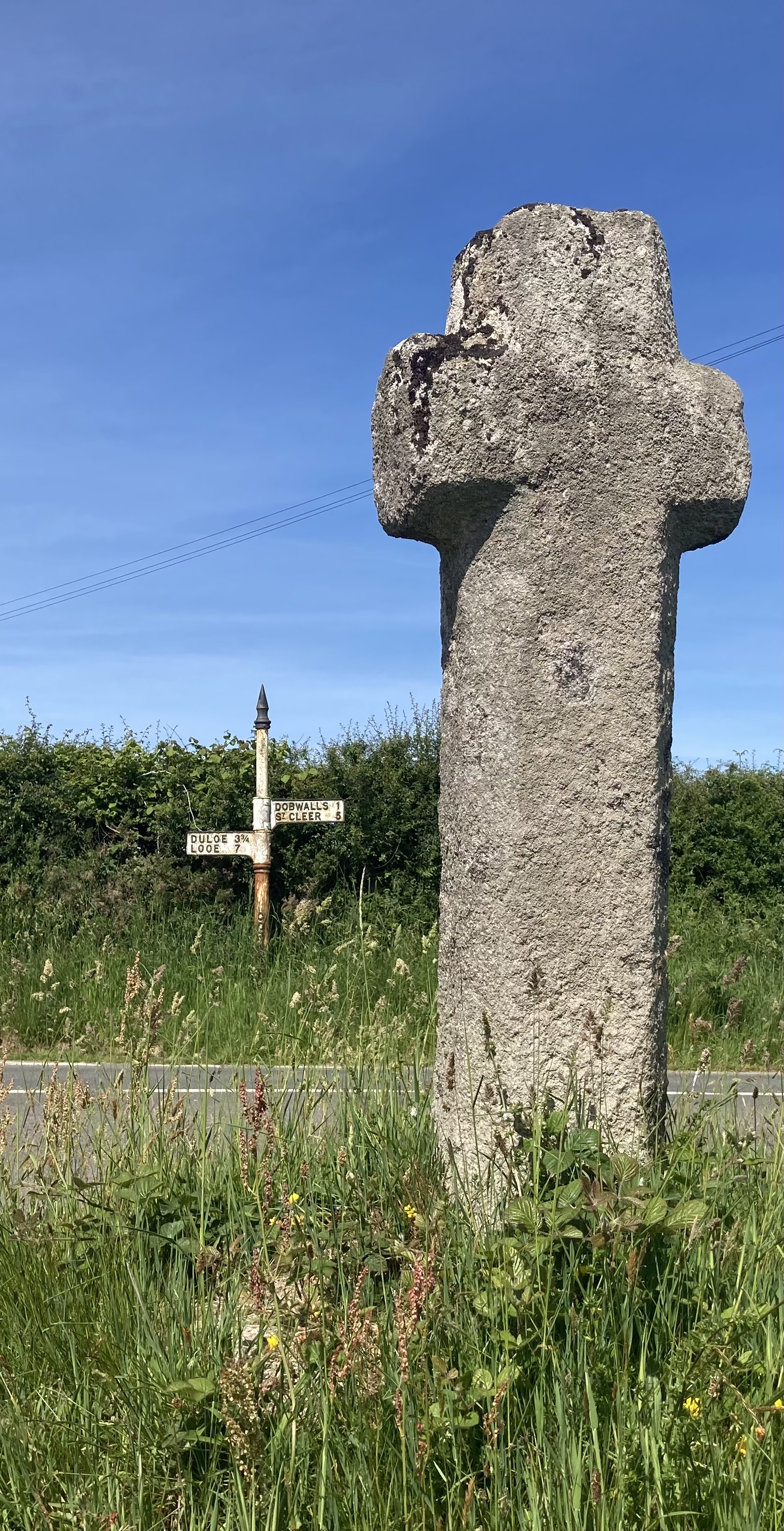
St Keyne's Holy Well, St Keyne, Cornwall
Location: OS SX248 603 Near Liskeard
On our way to find St Keyne's Holy Well we passed a beautiful Celtic cross at a junction, perhaps a marker towards Keyne's oratory.
St Keyne's Holy Well is situated in a beautiful leafy glade at the junction of two lanes, where a stream pours from the bank on one side and the well enclosure is on the other. It has been well maintained with a semicircular enclosure with stone paths leading to the well house which is set down below the road.
The well enclosure is very quiet and peaceful with the sounds of running water and little else. It's a place to linger, wait and pray, letting the solitude and peace permeate yourself. The well house is made of beautiful granite blocks with a basin where the water collects. It was full and clear when we visited, even though we were in a hot dry period of weather.
We found ourselves readily worshipping in song and enjoying the presence of God which rests here. Angels came and joined our worship of Jesus and the whole experience was one of rest and holiness.
Just up the road is the village of St Keyne and the parish church is clearly on a lan, a circular raised area which indicates a Celtic Christian prayer site, usually where a saint's oratory and chapel were. Sadly the church was locked but the lan was very visible and there was a lovely peace, especially outside the church at the altar end.

A plaque set in stone says it was restored in 1936 by Liskeard Old Cornwall Society.


KEYNE- Welsh
(Alternative names, Keane, Kayane, Keyna, Cenau, Cenedion, Deinwen)
Died 490AD
There is only one written account of her life (Vita Sanctae Keynae) but this was 800 years after she lived so is not considered accurate. However, some things are known about her.
St Keyne was one of King Brychan’s daughters, apparently very beautiful and as a result had many offeres of marriage which she refused. She was known for her holiness and piety, as well as her purity, having taken a vow of chastity and lived as a hermit most of the time. In Welsh she is known as Cain Wyry which means Keyne the Maiden, or Virgin.
There are many dedications to St Keyne in South Wales, Anglesey, Somerset, Hertfordshire and Cornwall. She is said to have travelled widely and founded many prayer oratories in Wales, including Llangeinor in Mid Glamorgan, Llangunnor and Llangain in Dyfed and Rockfield (Llangennon) in Runston Gwent. There is a side chapel in Brecon cathedral dedicated to her. I’ve had amazing encounters with God in this particular chapel and have been returning for several decades.
In Cornwall St Keyne village is named after her and her holy well is still there, plus the church is built on a ‘lan’ indicating an early Christian holy settlement. The River Kenwyn in Truro is also attributed to her name and she is the patron saint of St Martin by Looe (Penndrumm).
One interesting legend is from Keynsham in Somerset where it’s said she lived on the banks of the River Avon. It was swarming with serpents and uninhabitable as a result. She prayed fervently and the serpents were turned to stone and the land became habitable. It’s easy to dismiss this type of story as mere legend yet it has survived over 1500 years and one assumes there is a grain of truth within it. Afterall, these Celtic Christians moved in supernatural power and there are many such stories existing.
In around 490AD she visited her nephew St Cadoc at St Michael’s Mount in Cornwall and stayed there awhile before returning to Wales. A healing spring marked her final prayer oratory and where she died. The likely spot for this is Llangeinor in Glamorgan. It is said the healing properties of the spring remain.
